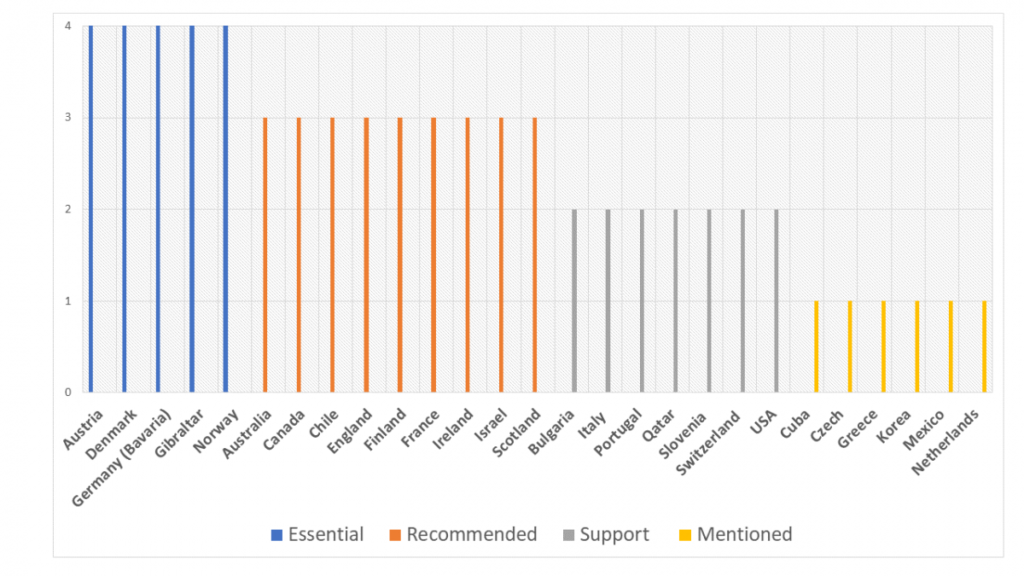We are the sum of all parts, and in the face of cognitive impairment, our environments can take on enabling or disabling roles.
Imagine living in an environment where you can’t find the bathroom or the lighting in your room, where it is so dark you can’t even find your glasses. You can’t safely access your garden because others have perceived the area as too dangerous for you to be granted access. Our environment is around us from the time we wake up until the time we go to bed. Aside from enabling the person living with dementia, a well-designed environment can influence our senses, enhance our well-being, contribute to meaningful experiences and quality of life. A well-designed built environment can help to support caregivers and staff. The environment empowers them to deliver better care, meaningful activities and therapeutic interventions for people living with dementia. Poorly designed built environments can contribute to changes in residents’ behaviour due to overwhelming stimuli, safety issues, poor navigation and contribution to untimely care.
Looking at the evidence, research in the space of environmental design for people living with dementia has spanned four decades, stretching as far back as the 1980s. In addition to research, some national dementia plans now include information on dementia enabling environments. A recent review found 27 nations with national dementia plans containing some mention of dementia-related design, or recommendations, support, or statements of the essential nature of dementia-related design for built environments.

According to the Alzheimer’s Disease International report titled “Design, dignity and dementia” (2020), there is a gap in education on dementia enabling environments. This result was also reflected in my research which I worked to adapt the Australian Environmental Assessment Tool-High Care (EAT-HC) for the Singaporean population. The study included participants working with or caring for people living with dementia or individuals involved in designing facilities for people living with dementia. Despite their involvement in aged care, half of the participants who tested the tool highlighted the need for education and training on the topic. A third of the participants had not heard about an environmental assessment tool that could be utilised to evaluate the environment for people living with dementia. With the environment being such a key component on a national and personal level for people living with dementia, we would think that there would be a high level of awareness on this topic and that training was widely available. Without an understanding of dementia enabling design, it begs the question: how can policymakers, management, designers, architects, and planners implement designs in the planning or development process of new buildings that serve to cater for people living with dementia? How do families create an enabling, culturally appropriate and safe, environment for their loved ones? How do communities encourage positive social interaction in neighbourhoods and community amenities that may prove to be disabling for the individual, their families and care staff?

We know there is a gap between evidence and practice. Environments for people living with dementia are not designed to enable or support the individual, their families or the health and social care professionals. No implementation can be carried out, and evidence cannot be put into practice if there is no awareness or understanding of the role in which design impacts the person living with dementia and the people around them. In translating knowledge into action, the lack of awareness is the first barrier in implementing change.Education is vital in the journey towards sustainable implementation and translating knowledge into action. With education in dementia enabling environments, people will be able to understand
- The impacts of the environment on dementia care
- How dementia enabling environments can support people living with dementia
- Recognise evidence-based best practice environmental interventions

Education can empower the individual to attain evidence-based best practice that can lead to better design and improved quality of life for the person with dementia and the people around them. For countries interested in increasing the level of awareness of dementia enabling environments, what constitutes education? We have witnessed with the recent Alzheimer’s Disease International reporta global introduction to the topic of dementia enabling environments. However, aside from publications and campaigns, a positive start to creating awareness and introducing education in this space for people living with dementia, their families and people working or providing care can be in the form of
- Culturally appropriate education materials available in print or online
- Audio-visual media providing introductory content
- Local information sessions (Face to face or online)
- Academic detailing
- Campaigns
To create environments that can enhance the quality of life, empower the individual and the people around them and enable the individuals, we need to look into initiatives that can improve the health and design literacy of dementia enabling environments within our communities and nations. Initiatives should not only be targeted at older adults, but it should be inclusive people of all ages. This allows the person living with dementia, their loved ones, and the people working with them to be equipped with knowledge and understanding to create a future that is inclusive and enabling for all.

Dr Joanna Sun consults and lectures on dementia enabling design and works as a social media coordinator at the Wicking Dementia Research and Education Centre. Her research focuses on the development of a built environmental assessment tool for people living with dementia Singapore. Joanna has developed an environmental assessment tool for facilities providing high levels of care for people living with dementia in Singapore. Her research interest lies in understanding the influence of the built environment, technology and education for people living with dementia and their families.




